Text
Week 8 - The Sound of Silence
It's Friday 22nd of November, 1963.
The time is 12:30 p.m.
And you'd be forgiven for thinking you've seen this movie before.
A limousine turns on to Elm Street -
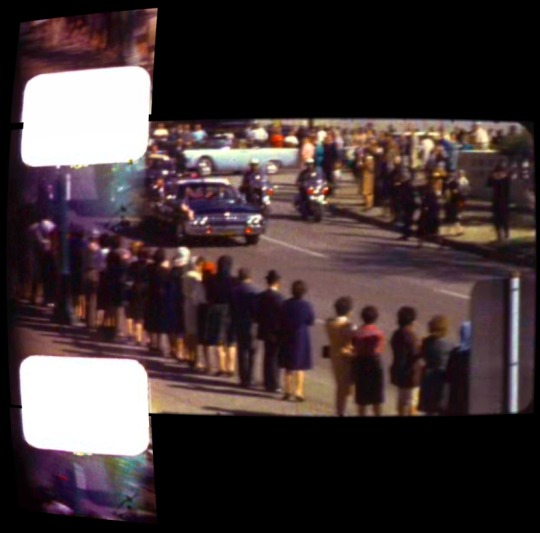
A man holds up an umbrella, even though it isn't raining -
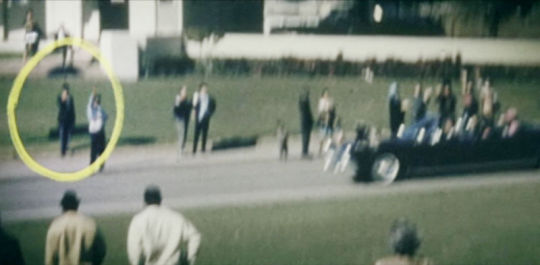
The President reaches for his throat -

A man stands on a concrete plinth and films everything.
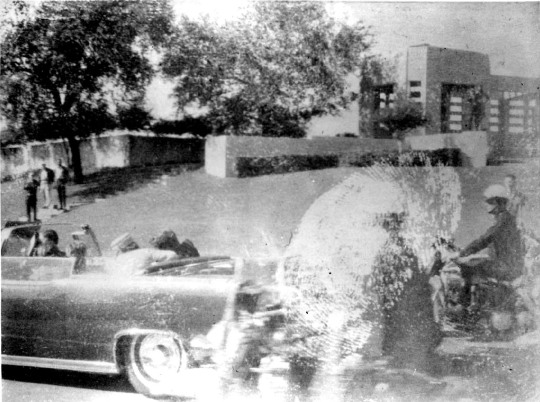
And, finally, the car accelerates

In the aftermath of this event, it was the recycling of these images that made it endure. Not only did they allow us to participate, and act as witnesses, but they also froze the event into some kind of objective reality.
Put simply, we can all see what happened.
Yet, no matter how many times people studied the images, there was something missing - a piece of evidence that was unavailable to anyone who tried to investigate the case. There's no sound in any of the films or audio from the motorcade. The most studied 6 seconds in history takes place in complete silence and the only sounds we associate with them are the words given in testimony -
Nellie Connolly turning to the President as the car passed the Book Depository - "You can't say Dallas doesn't love you now Jack".
Governor Connolly, just a few seconds later - "My God, they're going to kill us all".
But the actual sounds - the number of shots, from which direction, and over what time frame - were only heard by that curious bunch of people in Dealey Plaza. And as you've probably come to expect by now, their testimony provides more questions than answers.
On the issue of the number of shots, there appears to be some consensus - over 88% of witnesses saying they heard 3. Likewise, on the timing of the shots there seems to be agreement - approximately 70% of witnesses said they took place between 4-6 seconds. In fact, it's only when we come to the subject of where the shots came from that it starts to get confusing.
48% of people thought the shots came from The Grassy Knoll, to the right and front of Kennedy.
44% of people thought they came from The Texas School Book Depository, to the left and behind Kennedy.

It’s also worth noting that, crucially, only 4% of people thought the shots came from two different directions. This, more than any other piece of witness testimony, seems pretty damning if you're trying to argue that there were shooters in different locations.
But likewise, if you're trying to argue that ALL the shots came from the Book Depository then how do you account for the majority of witnesses that say otherwise? Can all those people really be mistaken?
As usual, the research community were left scratching their heads at the available evidence and yearning for the missing pieces of the puzzle. If only someone, somewhere, had a sound recording of what actually happened that day.
It's at this point that I want to quickly introduce you to my favourite witness in this particular area - J.C Price. On the day of the assassination, Price told a police officer that he reckoned the shooting lasted for about five minutes!
FIVE MINUTES!
HA HA HA HA HA HA HA HA HA HA HA HA HA HA HA HA HA HA HA HA HA HA HA HA HA HA HA HA HA HA HA HA HA HA HA HA HA HA HA HA HA HA HA HA HA HA HA HA HA HA HA HA HA HA HA HA HA HA HA HA HA HA HA
He may not contribute to a better understanding of the assassination but his inability to judge time is something to behold. Imagine the size of his electronic board if he was a fourth official, or the look on his face if someone bought him a slow cooker for his birthday. But more than that, just imagine JC Price watching the Zapruder film for the first time.
"Hang on, what the fuck's this?"

Fast forward to 1978.
The House Select Committee on Assassinations are due to conclude the second official investigation into the crime and it looks like a repeat of the original result - Lee Harvey Oswald acted alone and fired 3 shots from The Texas School Book Depository.
And then, finally, it happened.
Someone found a dictabelt recording that was taken from a police officer's motorcycle on the 22nd of November, 1963. It was mostly static and background noise but the Committee thought there was something there and postponed their report to investigate further. They even closed off Dealey Plaza, 15 years after the event, and had some fella firing a rifle from the Book Depository and The Grassy Knoll so they could establish an acoustical fingerprint of those shots. They then referred back to the dictabelt recording to see if there was anything similar.
A few months later they published their conclusions - to dramatic effect.
"Scientific acoustical evidence establishes a high probability that two gunmen fired at President Kennedy. The Committee believes, on the basis of the evidence available to it, that President John F Kennedy was probably assassinated as a result of a conspiracy."
And there you have it. At last we were able to hear what happened that day and science trumped the subjective nature of witness testimony. The case had been proved, above a 95% probability, that one shot had been fired from the grassy knoll and that Lee Harvey Oswald had some mates after all.
But you won't believe what happened next. Even in the context of this story, it's pretty incredible. Shortly after the committee published their report, a soft porn magazine called Gallery released a "JFK Assassination special". And, in the maddest marketing campaign ever, they decided to include a Flexi disc of the dictabelt recording with every copy.
What a meeting that must have been.
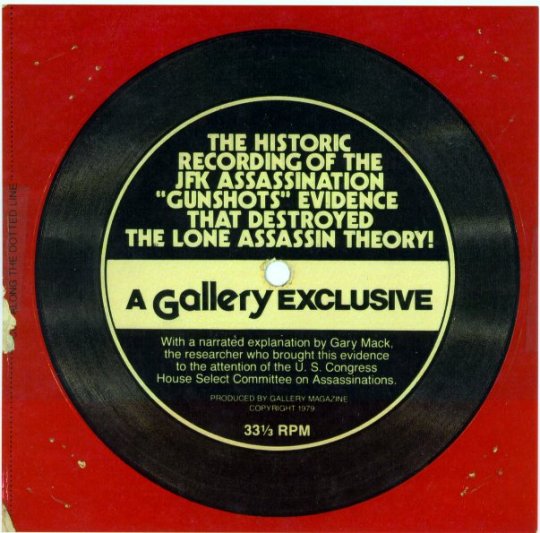
Gallery found their target market though - a rock drummer from Ohio called Steve Barber. For reasons unknown to me, Barber listened to the disc repeatedly until, suddenly, he heard something that no one else had picked up on. It was a policeman, barely audible amongst the static, who was saying "Hold everything secure". Crucially, he was saying those words at the exact moment the Committee claimed the shots were being fired.
The policeman was identified as Sheriff Bill Decker and it was established that those words were actually said a minute after the assassination.
Barber proved the recording wasn't made during the assassination and, in the process, blew the case wide open again. Science had been defeated - by a combination of soft porn and a weird drummer.
It was back to square one.
It's now Friday 22nd of November, 2012.
The time is 12:30 p.m
It's the 49th anniversary of the assassination and Dealey Plaza has become a magnet for researchers, history buffs, journalists and, on this occasion, me. And in amongst those people are some of the witnesses - people who were there on that fateful day, who still live in Dallas, and, every year, take their place by the side of the road as if it was 1963 again.
I start talking to two of them - John Templin and Ernest Brandt. They're in the exact location they were in 1963, halfway between the Book Depository and the Knoll. Brandt, in a lovely touch, is even wearing the same hat he wore that day.
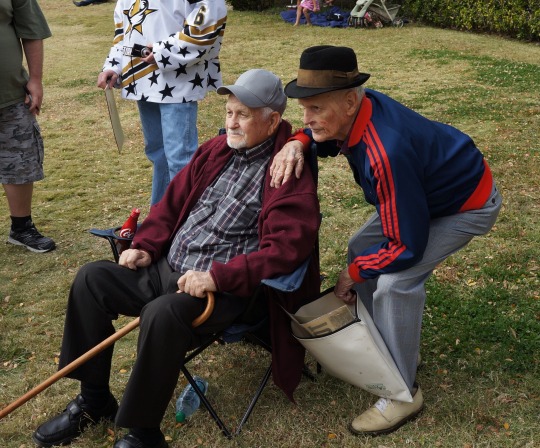
I ask them how many shots they heard.
"Three"', they replied in stereo.
I asked them where they came from.
"The Book Depository", they replied, again in stereo.
I then met Mike Brown.
He was a teenager in 1963 and carries around photographs from that day which he'll sign and give to you - for a price. He told me he heard 6 shots in total, some from the Grassy Knoll and some from the Book Depository.

So here I am. There are only about 500 people who heard what happened and most of them have since died. But I'm now in the middle of three of the survivors and they can't even agree on the basic facts. They start arguing, Brandt and Templin berating Brown and telling him he's wrong. Yet he stands resilient, sticking to a story that no one can disprove.
To most people, I realise this could be seen as an anti-climax on a search for discovery. Talking to the witnesses is as close as I'll get to being there, and if they can't agree then what's the point? Yet, for me, that is the point - this ongoing mystery that will never be solved to the satisfaction of everyone. This happened 49 years ago and yet these three people are here again - standing in the same spot and arguing about what happened. You have to admire that. You have to then recognise that this isn't about conspiracy theories, or absolute truths - it's about these people, this curious bunch, and what's STILL happening to them.
As they continue to argue with each other, I start laughing at the absurdity of the situation I've found myself in - an amused moderator who has no idea who's right or wrong. 30 years of obsession has brought me to this unresolved point and I laugh even more.
In fact, the only thing that could have made me happier is seeing JC Price arrive with a t-shirt commemorating the 762nd anniversary of the JFK Assassination.
See you next time.
Martin Fitzgerald (@RamJfkClub)
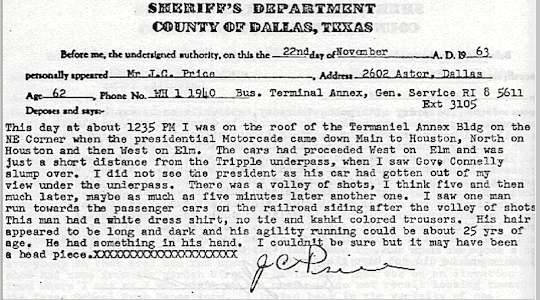
3 notes
·
View notes
Text
Week 7 - Tramps Like Us
It's Friday the 22nd of November, 1963.
The time is 1.30 p.m.
In the hour since it happened, Dealey Plaza has become a scene of confusion and everyone's looking for answers. Amidst the panic, someone approaches the police with information - that three men were seen running towards the railroad, behind the grassy knoll.
"They jumped on a stationary freight train. I think they're still there."
The police ran to the railroads and immediately searched the train. And there they were - huddled in a dark corner in one of the carriages. Accompanying them was an overpowering smell of cheap wine and a bag containing, amongst other things, a knife and a tin of spam.
Were these men involved in the assassination? And if they weren't, why were they hiding on a train so soon after the crime?
With a police force not in the mood to take any chances, the men were arrested and marched through a shell-shocked Dealey Plaza.
And the weird thing, apart from the spam, is that we wouldn't know their names for 30 years.

In the official investigation of Kennedy's death, these men are only mentioned once, by a Detective Harkness -
MR HARKNESS - We got a long freight that was in there, and we pulled some people off of there and took them to the station
MR BELIN - You mean some transients?
MR HARKNESS - Tramps and Hoboes
MR BELIN - Were all those questioned?
MR HARKNESS - Yes sir, they were taken to the station and questioned.
MR BELIN - Any guns of any kind found?
MR HARKNESS - Not to my knowledge
And that was it. In the entire 26 volumes of The Warren Commission, three men who were arrested at the scene of the crime are given less than 50 words - about the same amount of coverage as a story about the young Lee Harvey Oswald killing some fish. There's no attempt to investigate, check the arrest records, or even track the men down.
It was only in 1966, when their photographs emerged for the first time, that people really started to ask questions.
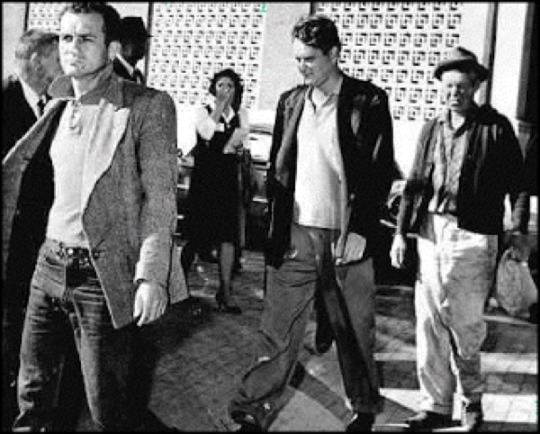
“Hang on, they don't look like tramps. Ok, maybe the one at the back with the bag of spam does, but the guy at the front's wearing a tweed jacket!"
"Why is the tall one in the middle smiling? The President's just been shot!"
"Why does that woman look so horrified? What does she know that we don’t?"
"Look at how clean shaven they are!"
In an environment of suspicion following the official investigation, legions of amateur detectives treated the photographs as yet another lead that had gone unfollowed. Because, put simply, if Oswald didn't do it then someone else did. Could this be the breakthrough to solving the most difficult question of all - "If not Oswald, then who?"
It seemed the photographs provided the answer and the three tramps became the who (not to be confused with The Who, although that would have been amazing).
There was only one problem in closing the case - when investigators requested the arrest records from The Dallas Police Department they were told they'd gone missing.
With a lack of positive identification, it became open season for anyone and everyone who sought to solve the mystery. In the mid ‘70s, for example, investigators pointed to similarities between the tramps and some of the men involved in the Watergate burglary.
And to be fair, if you looked hard enough there was a resemblance -

Meanwhile, an assortment of charlatans and con men stepped forward debunking those theories and claiming that THEY were the tramps. In books and exclusive interviews, they would then tell wild stories about the day they went to Dallas and shot JFK. One of those men, bizarrely, was Woody Harrelson's dad - a convicted murderer who claimed to be the smiling tramp whilst he was off his head on cocaine.
I mean we’ve all been there but, again, there was a resemblance –
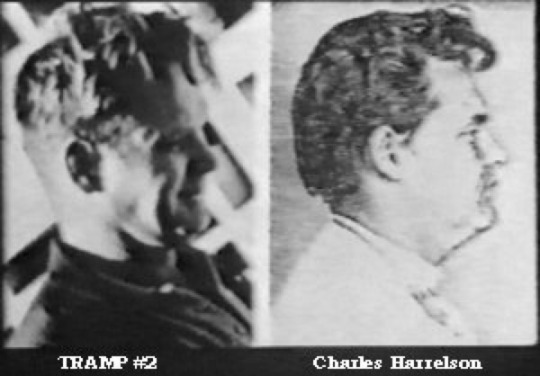
The desire to implicate the tramps peaked in Oliver Stone's JFK where they received star billing - an ominous presence stalking Dealey Plaza and leaving the viewer in no doubt as to their involvement. According to the film, they weren't tramps at all - they were hired assassins.
Yet ironically, it was that film that finally provided the answer.
In the aftermath of the controversy it generated, a raft of previously unreleased documents surfaced in 1992 relating to all matters of the assassination. And in amongst the declassified witness testimony, and previously unseen medical reports, there were 3 documents released from The Dallas Police Department - the arrest records from the 22nd of November, 1963 for Howard Doyle, John Gedney, and Gus Abrams.
They were just three tramps after all - held for four days and released without charge.
Doyle, the tramp in tweed, was subsequently interviewed in 1992 and explained that they had spent the night before the assassination in a hostel where they had a change of clothes, a bath, and a shave. The next day, at around 12:30pm, they were wandering the railroads near Dealey Plaza looking to hop a train to Fort Worth. Suddenly they heard the chorus of sirens and, without knowing what had happened, thought it best to keep out of the way.
It was the same philosophy they held to when they saw the photos throughout the years, implicating them in the murder of the President.
As Doyle said -
"I am a plain guy, a simple country boy, and that's the way I want to stay. I wouldn't be a celebrity for 10 million dollars."
He then ends the interview, exasperated, shouting at the camera – “LIKE I SAY, THE TRAMPS HAD NOTHING TO DO WITH IT!"
I love that. Their iconography had become so strong that even he refers to them as The Tramps.
Investigators then tracked down John Gedney, the smiling tramp, who corroborated Doyle's story. In the intervening years he had sobered up, got a degree, and moved to Australia. And finally Gus Abrams, the tramp with the spam, hopped trains and lived the life of a hobo until he died in 1987. His sister was shown the photographs and confirmed his identity.
Their story was over - another mystery that unraveled to a benign anti-climax and made everyone, except them, look stupid in the process.
They just wanted to find the quiet coach but, instead, got dragged and marched into a mess that lasted for years.

Seven weeks in and you'd be forgiven for thinking this a variation on a story you've heard before - on the dangers of over analysing and unfounded speculation. We've seen similar tales with The Umbrella Man and Babushka Lady and, maybe, you're even now starting to question my own obsession with this subject - if all these stories have dead ends, then why does it captivate you so much?
But let me quickly tell you the story about another tramp.
In 1964, an alcoholic vagrant called John Elrod walked into a police station in Memphis and told them something had been preying on his mind. He proceeded to tell the police about the time he shared a cell with Lee Harvey Oswald in the days after the assassination. Having dangled that particular carrot, he then went further and said that Oswald told him about his involvement in gun running with some right wing extremists. His cast of characters included, amongst others, Jack Ruby and the owner of the only store in Dallas who sold ammunition for a 6.5 mm Mannlicher Carcano.
The Memphis Police turned Elrod over to the FBI where he was subsequently dismissed as yet another crackpot looking for attention. They pointed to the fact that there was no evidence of Oswald sharing a cell with anyone and, most crucially of all, that the Dallas Police Department had no arrest record for a John Elrod on the 22nd of November, 1963.
That was the end of that. The fourth tramp vanished without a trace - a solo project without any of the pointless speculation and conjecture given to his contemporaries.
But in 1992, when The Dallas Police Department released their files, a journalist found a crucial piece of information. It was next to the arrest records for the three tramps, and, like them, had been hidden away for 29 years.
It was the arrest record for John Elrod - dated the 22nd of November, 1963.
And if you're smiling at that revelation then you've answered your own question.
See you next week.
Martin Fitzgerald (@RamJfkClub)
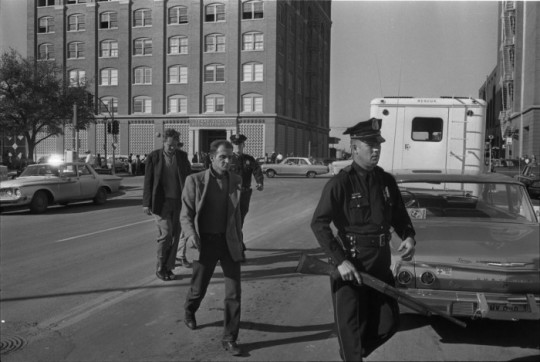
2 notes
·
View notes
Text
Week 6 - The Hold Steady
It's Friday the 22nd of November, 1963.
The time is 12:30 p.m.
Kennedy's motorcade is on Houston Street, approaching the end of a tour through downtown Dallas. The Texas School Book Depository looms ahead of him, and, on his left, is Elm Street. It's here that we find Abraham Zapruder - a dressmaker with vertigo who is standing on a concrete plinth. He's been shooting home movies for 30 years but he knows this will be unlike anything he's shot before. It's why he arrived early to secure the best view in Dealey Plaza. It's why a co-worker, Marilyn Sitzman, is standing behind him to make sure he doesn't fall over.
Suddenly a lone motorcycle comes into view and Zapruder excitedly starts filming - tracking its journey down Elm Street.
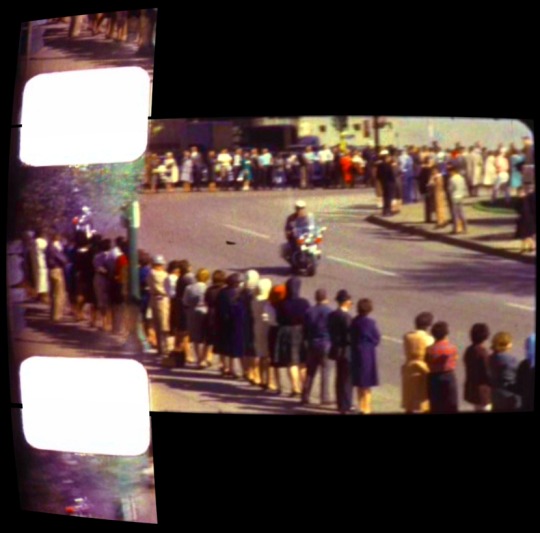
But it's a false start and Zapruder quickly realises it's just an outrider clearing the way. So he stops the camera, careful not to waste his film, and composes himself again - Sitzman still behind him and his lens trained on the empty street before him.
He continues to stare through the viewfinder, waiting for the action to start.
And when it did, Zapruder was ready - the calmest man in Dealey Plaza. According to Sitzman, he saw the limousine arrive and simply said "ok, here we go."

Over the course of the next six seconds, Zapruder steadily moves from left to right and, despite what he saw, he captured everything.
It begins with Kennedy half way down the street, waving to the crowds as he sees the freeway just ahead of him. In the top right hand corner, sitting on a retaining wall, you can just see Howard Brennan - wearing a white shirt and an aluminium helmet.
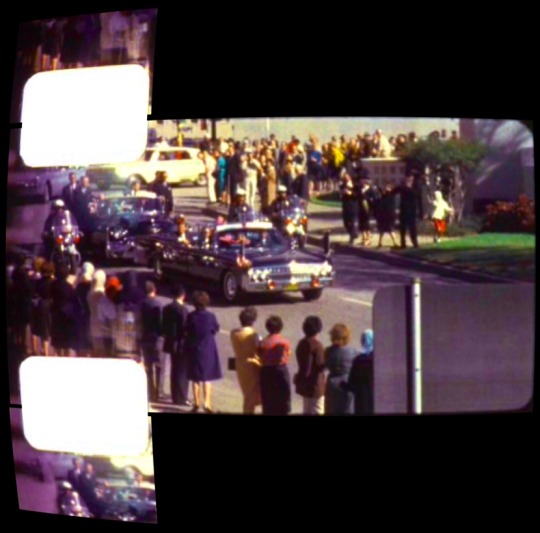
As Kennedy now emerges from behind the Stemmons’ Freeway sign, there's the first sense that something has happened. A shot has been heard, Kennedy is no longer waving, and just to the right of the sign, if you look carefully, you can make out a large black umbrella.
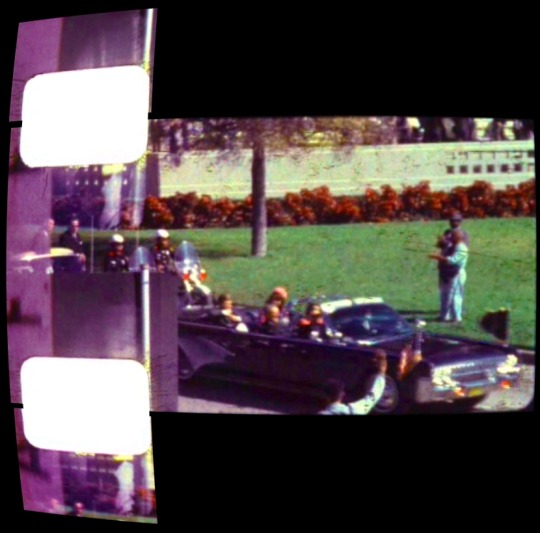
He captured everything. He never flinched.
The car is now approaching Zapruder himself and, through his zoom lens, he can see the pain and the concern on the faces of the people inside. Across the road, directly opposite, he also catches sight of a woman in a headscarf who may, or may not, be a blonde 17 year old singer called Beverley Oliver.
It's all there. The horror in the centre of the frame and some of the characters on the periphery that you’ve met so far.
We're now at frame 313, the most famous and horrific of them all. In any normal sequence of events I would show it here, but I prefer to switch cameras at this stage and show you Mary Moorman's view at the crucial moment.
A long six seconds have elapsed, there can be no doubt now of what's happening, but look closely at the top right corner of the photograph. And there he is - standing on the plinth with Sitzman behind him.
He's about to film something that, once seen, can never be forgotten.
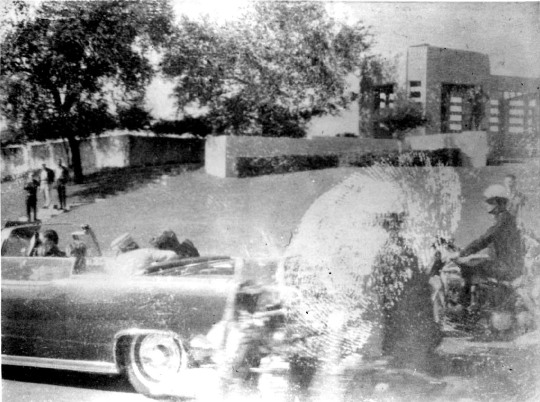
Zapruder, high above the crowds and looking through a zoom lens, was one of the first people to know what happened. As he stepped down from the plinth he wandered around Dealey Plaza screaming "they've killed him, they've killed him" - the image of that fatal shot fresh in his mind and captured forever in his camera. Whilst everyone else was confused, he was certain.
Within minutes, word spread around Dealey Plaza that someone had filmed the whole thing and eager journalists and police officers started to approach the dazed Zapruder. The Secret Service then phone the Kodak lab near Dallas Airport and tell them to prepare themselves for their arrival. As Zapruder and his newly acquired entourage approach the lab, Air Force One takes off from the airport with Kennedy's body on board, and a new President about to be sworn in.
An hour later a select few are watching the premiere of The Zapruder Film in total silence only to have it broken at the end with the words – “Oh My God.”
At some point that evening, Zapruder drives home with his camera and the original copy of the film on the seat beside him. His wife opens the door and simply says “Oh Abe” as she greets a man visibly changed by the day’s events. Yet he wants more, he’s not quite finished, and he heads to his den where for years he has watched home movies of his family, their holidays, and his early life in Brooklyn.
He finds the projector, loads the film, and watches it again. And again. And again. All night he sat there, simultaneously distraught yet obsessed, as the film that wouldn’t be seen by the American Public for 12 years played on a loop in his house. In the nights that followed he was haunted by a recurring dream – he’d be wandering around Times Square when suddenly he would come across a sharply dressed man standing in front of a theatre trying to sell tickets to his home movie. As busy New Yorkers hurried by he would shout out – “Come inside to see the president murdered on the big screen!”
The burden had got to him and, understandably, he looked to relieve it as soon as possible. Life Magazine paid him for the rights to the film, with assurances they would treat it sensitively, and refrain from showing frame 313.
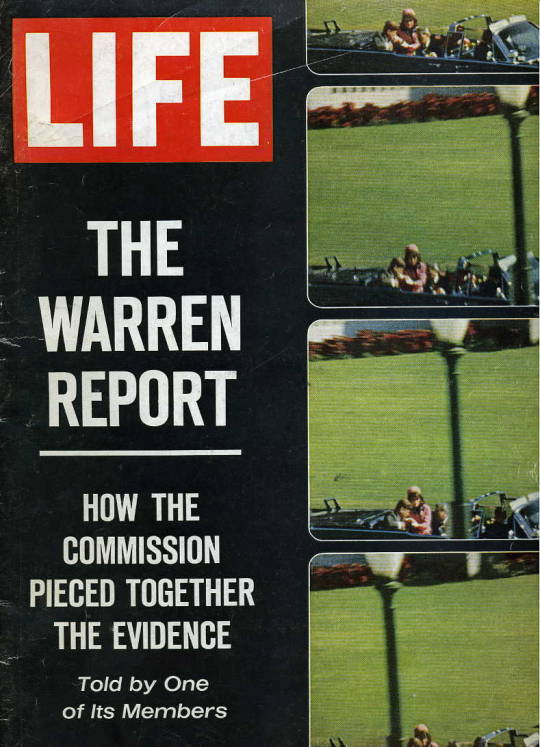
In the absence of any trial, the film became the cornerstone of the official investigation in 1964 and for anyone trying to understand what happened that day. It’s been slowed down, enhanced, computerised, chopped into segments, and relentlessly analysed in the hope it provides answers. Not only that, it marked a cultural transformation from when events such as this were written about, with subjective flourish, to a point where they were captured in objective purity. Think about what our understanding of this event would be without this film? What would be the exhibit that crystallizes these moments in our mind? More than providing definitive answers as to who, why, and how, that’s the film’s true legacy – a fleeting moment, one of the most important in the 20th Century, was captured and, years later, shown to the world.
That year was 1975 and the program was called Goodnight America - hosted by Geraldo Rivera.
Before he shows it, he literally tells you to switch channels and watch the late night movie instead. He even warns you that he’s not messing about here and what you’re about to see is not covered by the usual disclaimer of “if you’re sensitive, do not watch this.”
He then shows it to the American public for the first time and ends by saying “My God, that’s the worst thing I’ve ever seen.”
He then zooms in on Kennedy’s head and shows it again before repeating the same words - “My God, that’s the worst thing I’ve ever seen.”
But now the point, or at least my point.
As much as the film fascinates me, I have to confess a deeper appeal for Abe himself and something I think he represents – something I’ve been trying to put my finger on for 6 weeks but now reveals itself.
Let me take you back to that morning in Dallas.
Everyone knows the President is coming, it’s been planned, anticipated, and, today, it’s finally happening. Everyone was funny, everyone was happy, and everyone was coming to the centre of the city. Because that’s where the main event was that day – in the wide open streets of Downtown Dallas where the crowds were in their thousands and the motorcade was showered in ticker tape and fanfare. Do you want footage of that? There’s loads of it, taken by professional news organisations who rightly thought they were in the best position.
Yet when Zapruder woke up that morning and considered his options he thought about THAT event and decided to opt out. A natural pessimist, he just couldn’t be bothered with all those people - jostling for position, and competing for attention.
So he went to work and left his camera at home.
Think about that for a second - the Zapruder Film had been cancelled, and the camera had been left on the shelf.
But his colleagues heard this, knowing how much he loved making movies, they persuaded him to go home and fetch it.
“Just film it in Dealey Plaza”, they said, “there’ll only be a few hundred people there.”
That’s how Zapruder made his mind up.
He was offered something smaller, away from the madness of the crowd. He’d looked at who was playing on the Pyramid Stage, shrugged his shoulders, and walked in the opposite direction. He didn’t go to the centre of the city, he went to the periphery, and, as we’ve seen so far, he was joined by a collection of like-minded people – a construction worker who was spending his lunch break on his own; a man who deliberately walked 5 blocks to do a niche heckle with an umbrella.
Yet, they became the main event – a bunch of people who actively avoided it but, somehow, made it richer by their presence.
So for all the talk of the film, of back and to the left and frame 313, it’s that that I want you to remember about Zapruder. He saw it coming, he said “Ok, here we go”, and then he scooped everyone in town whilst a woman stood behind him to stop him falling over.
And despite what he saw through his zoom lens, he held steady the whole time.
Martin Fitzgerald (@RamJfkClub)

3 notes
·
View notes
Text
Week 5 - Podcast
This week we caught up with Iain Lee on the radio and talked about the following things -
1) Why are we doing this?
2) The story so far
3) A sneak preview of Week 6
Someone who listened to it called me a “Debunker” and, ever since, i’ve been singing it to the tune of Debaser by The Pixies.
You can listen to it here - (the podcast, not me singing The Pixies song)
Have a great week.
Martin
x
P.S - Bonus Debaser below
youtube
3 notes
·
View notes
Text
Week 4 - About a Boy
It isn't Friday the 22nd of November, 1963
The time isn't 12:30 p.m.
It's actually October 18th, 1939, and we're in New Orleans, Louisiana.
A kid called Lee Harvey Oswald has just been born and looks a bit put out that someone has made him wear a yellow dress.
Welcome to Part One of the strangest story of them all.
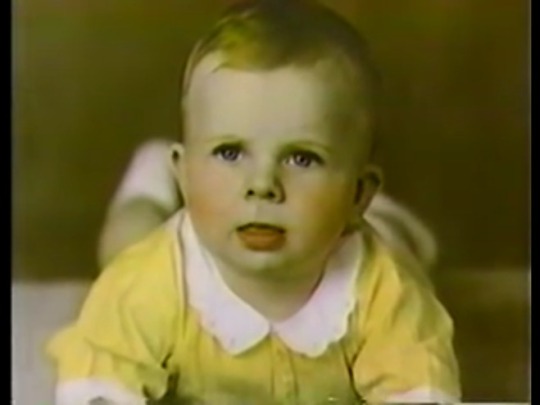
Ever since the assassination, the details of Oswald's childhood have been a rich source of speculation for researchers trying to understand him. Whether they're accusing him or defending him, there's a sense that the answers can be found in his formative years - that small actions here can be extrapolated into significant actions later.
For example, they point to the fact that his father died two months before he was born. This MUST have had a negative impact on his life, they argue.
They then psychoanalyse the mother - describing her as either a woman with good morals, doing what she thought best, or a domineering matriarch, consumed with self-pity.
Consider this from Lee's step-brother -
"If Lee was guilty then he was aided with a little extra push from his mother in the living conditions that she presented to him."
The conditions he refers to are various stages of poverty and dislocation brought upon by Oswald's mother constantly moving around looking for work. Again, they point to the unsettling effect this must have had on the child and, to be fair, it's hard to argue with the basic facts -
During his childhood, Lee Harvey Oswald lived in 22 different places and attended 12 different schools.
So far so bad for the poor kid then - his family are basically accomplices to a future crime and his early life is the worst series of The Littlest Hobo ever.
If he’d had a jaunty theme tune maybe things would have turned out differently.

With the simplistic overview out of the way, researchers and investigators dig deeper into his life looking for evidence of violence or rebelliousness - some sort of Rosebud moment that helps their case.
Some of these are potentially damning - he once threatened his step brother's wife with a pocket knife and, when his mother tried to intervene, he punched her in the face.
Some are just funny - he once got kicked off the school football team because he said the coach's rules violated his constitutional rights.
And some are just bizarre.
Julian Evans, a family friend of the Oswald's, told The Warren Commission a story about how he once took the young Oswald fishing with a group of other boys. He said everyone else threw the little fish back in the river and took the big ones home for dinner. But Oswald, he's at pains to add, was different.
Apparently he lined up all the fish he caught on the bank of the river and just walked off, leaving them to die.
The point of such testimony, of course, is to make an orchestra suddenly start in your mind - a crescendo of low notes that damns Oswald and convinces you of his guilt. But can they be trusted? How many of these stories have since been told through the prism of what he has been accused of and coloured by confirmation bias?
Here’s another section of Evan’s testimony to illustrate the point –
Mr JENNER: Did you ever see Lee Oswald in any fits of temper, so to speak?
Mr EVANS: - No; I didn’t.
Ok, that’s good.
Mr JENNER: Did you ever observe anything about Lee Oswald that would lead you to believe that he had any propensity toward acts of violence on the person of anybody else?
Mr EVANS: - No
Even better, I reckon he’s definitely innocent now.
Mr JENNER: What other impressions did you have of this boy?
Mr EVANS – Well, I thought he was a psycho.
Oh.
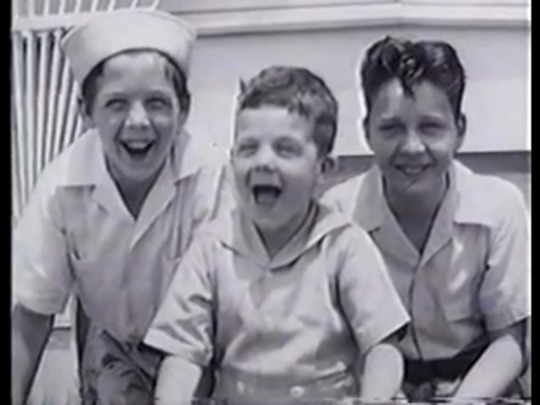
Probably the best assessment of Oswald’s childhood comes from his time in New York in 1952.
At aged 13, he attended a junior high school in the Bronx only to find himself a figure of fun due to his southern accent and his “western clothes.” So, not for the first time, he decides that school isn’t really for him and, instead, spends his days riding the New York Subway and hanging out at the Bronx Zoo. It’s here that a truant officer finds him and he’s subsequently remanded to an institution called Youth House for psychiatric evaluation.
One of the doctors there described him as a “seriously detached, withdrawn youngster”. She further added that there was "a rather pleasant, appealing quality which grows as one speaks to him." For his part, the young Oswald confirmed that he felt there was a veil between him and other people that he preferred to keep intact. He blamed his mother for virtually everything, telling the doctors that he felt she never cared enough about him and that he was a burden to her. He also admitted to fantasies about being powerful and sometimes hurting and killing people. But when asked to elaborate on these, he told the doctors it was none of their business.
The initial report on him states -
“Lee has to be diagnosed as personality pattern disturbance with schizoid features and passive--aggressive tendencies. Lee has to be seen as an emotionally, quite disturbed youngster who suffers under the impact of existing emotional isolation and deprivation, lack of affection, absence of family life and rejection by a self-involved and conflicted mother.”
It concluded –
“Despite his withdrawal, he gives the impression that he is not so difficult to reach as he appears and patient, prolonged effort in a sustained relationship with one therapist might bring results. There are indications that he has suffered serious personality damage but if he can receive help quickly this might be repaired to some extent.”
Unfortunately, though, Lee never received the prescribed help he needed. One day his mother came to visit him and he said “I want to get out of here. There are people in here that have killed people, and smoke.”
Deciding that she’d had enough of doctors interfering with her son, they packed their bags again and returned to New Orleans - moving into a red light district of prostitution and low level gangsters.
That’s bound to help.
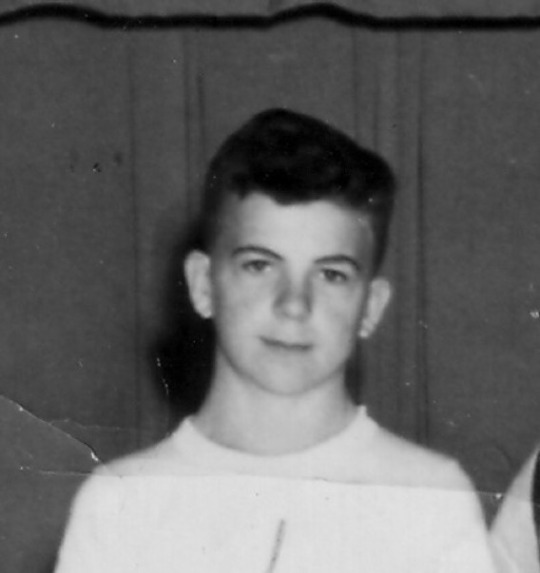
In future years, when that perennial question was asked – “Where were you when you heard JFK had been shot?” – it was the people in Dallas that had THE answer. And as we’ve seen so far, it was just the beginning of the stories they would tell.
“It was a heckle. Umbrellas are not a particular hobby of mine.”
“God put me there because I’ve got super eyesight.”
“I had a load of dark wigs back then and a prototype camera.”
The six seconds they witnessed would become the starting point for the rest of their lives whilst, yet again, the 24-year-old in the Texas School Book Depository was different – providing a testimony to these events that would be frustratingly brief and lacking any detail. Still, of all the characters in Dealey Plaza that day, he’s the one who deserves a backstory – the one that I want you to feel like you know before 12:30pm.
Not that it’s easy.
I’ve read so many accounts of Oswald’s early life now that it’s difficult to be certain of anything other than a sense of tragedy and a touch of empathy. At its most benign, the character that’s painted of the young Oswald is similar to my own experience through adolescence, as I’m sure it is for many other people. Even Bob Dylan, a month after the assassination, said that he saw a lot of himself in the accused assassin – a comment that sparked a huge controversy but was probably more reasoned than people gave it credit for.
Didn’t we all sometimes wear a veil when we were growing up?
Haven’t we all got our own version of the fish story if we zoom in on our own lives?
I know I have, which is probably why I find some of these stories amusing rather than damning. Maybe it’s me, but I’ve often paused to think about how his ex-football coach must have reacted to seeing Oswald in police custody in 1963.
“Here he goes, emphatically denying these charges and banging on about his constitutional rights again. He hasn’t changed much.”
Still, people are different. I guess that’s the point and, as I’ve said before, my imagination is prone to get in the way of the search for truth here.
My own sense of teenage estrangement passed because I was fortunate enough to benefit from a counter culture that catered for it. But Oswald had no such luxury, he’s stuck in 1953, listening to classical music because Psychocandy hasn’t been released yet. He’s 14, it’s the time in his life when he’s looking for external stimulation to define himself.
We know of two things that happened next.
Firstly, he went for a walk one day and an old woman on a street corner gave him a leaflet about a Jewish couple that were about to be executed for being communist spies. He follows this with a trip to the library and starts to read a series of books on Marxism.
Secondly, in October of 1953, a new television show premieres on American television called I Led Three Lives. Its main character was simultaneously a suburban husband, a member of the Communist Party, and a spy for the FBI.
It became Lee Harvey Oswald’s favourite TV show.
And it’s where we’ll leave him for now - glued to a programme whose message was that you could be anything to anyone.
Join us next week, when we head back to Dallas.
Martin Fitzgerald (@RamJfkClub)
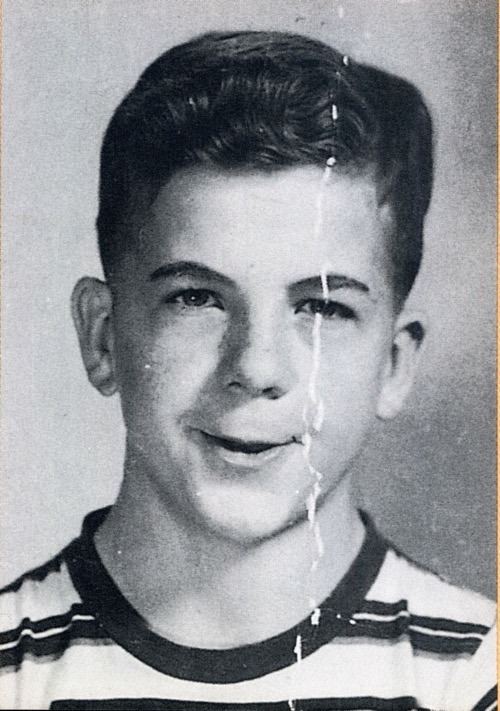
3 notes
·
View notes
Text
Week 3 - I’m all yours, Babushka Babushka.
It's Friday the 22nd of November, 1963.
The time is still 12:30 p.m.
President Kennedy's motorcade is now halfway down Elm Street and doubts are starting to fade.
That wasn't a motorcycle backfiring - this is actually happening.
Howard Brennan, a construction worker with a hard hat, is looking at a man that he'll either never forget, or remember, for the rest of his life.
Abraham Zapruder, a dressmaker with vertigo, is filming on top of a four-foot plinth and, remarkably, holding steady as the horror unfolds.
We're at the last second. Everything's about to go red.
Over the road from Zapruder, someone else appears to be filming the same movie from the opposite angle - this time with a backdrop of the picket fence and the grassy knoll.
She's on her own.
She's wearing a trench coat and a head scarf.
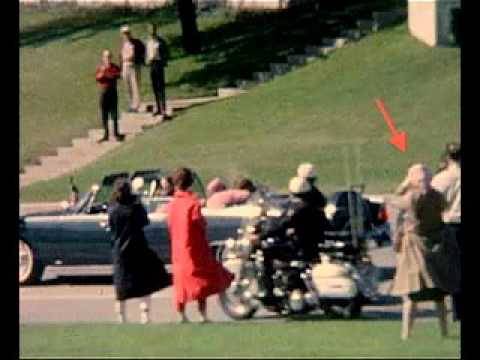
In the aftermath of what happened next she decided, for whatever reason, not to come forward as a witness. She's not mentioned in the 26 volumes of the official investigation in 1964 and, as a result, her own memory of what happened that day has never been recorded. Furthermore, whatever images she captured have never been seen.
Like the Umbrella Man, she understandably became an enigmatic character for researchers who were trying to fill in the gaps. If they could just find her, or more importantly her camera, then who knows what secrets could be unearthed. A second shooter? A puff of smoke behind the picket fence? Needing answers, they studied the photos taken that day and slowly pieced together her movements - stalking her as she moved around Dealey Plaza.
There she is, crossing the road -
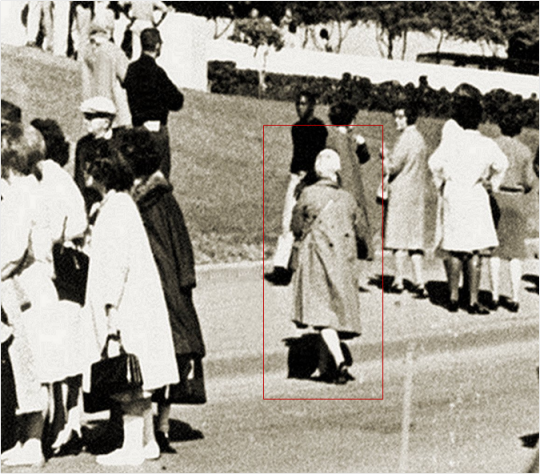
There she is, having crossed the road -

And, best of all, in probably my favourite photo from that day, there she is after the final shot - standing perfectly still whilst everyone else hits the floor and a policeman looks like he's about to run in about 7 different directions.
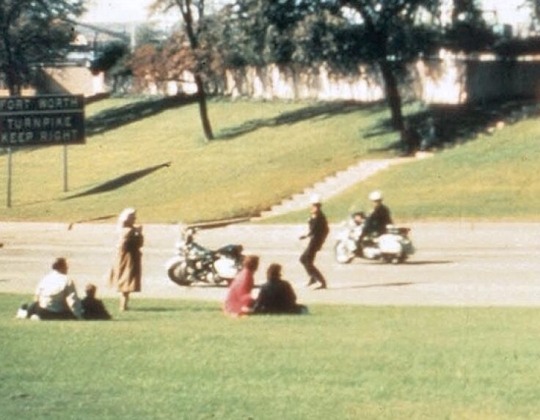
Still, despite the random nature of these photographs there was something hidden - a clear image of her face that might have exposed her true identity. If you zoomed in really close, the best you could establish as a fact was that she had dark hair. But everything else was guesswork -
"She seems stocky to me"
"I reckon she's in her mid-40s"
"Wasn't she in Coronation Street?”
She remained a mystery, one of the unidentified, until eventually someone decided to give her a name - The Babushka Lady.
Something to do with Russians and headscarves apparently.
Anyway, fast forward to 1970.
A researcher called J. Gary Shaw was attending a church revival in Cleburne, Texas and decided to have the preacher and his singing wife round for dinner. During the meal, the wife noticed his large collection of assassination books that had taken over his bookcase and casually remarked -
"Oh you know I was there that day? I don't talk about it, but I saw the President die."
As you can imagine, Shaw was startled by the revelation. Here, completely by chance, was a witness to the assassination at his dinner table. He asked where she was on that fateful day and she described her position as about two thirds of the way down Elm Street, on the south curb.
Shaw had memorised the photos, he knew there was only one unidentified witness from that area. But just to be sure, he drove her to Dealey Plaza and asked her to stand in the same spot she had occupied 7 years ago. She walked towards Elm Street, a few feet from the curb, and stood directly opposite a four-foot plinth on the other side of the road.
Shaw was now convinced - he had found The Babushka Lady and her name was a Beverly Oliver.
The fact that, in 1963, she was a 17- year-old with blonde hair seemed, at the time, neither here nor there.
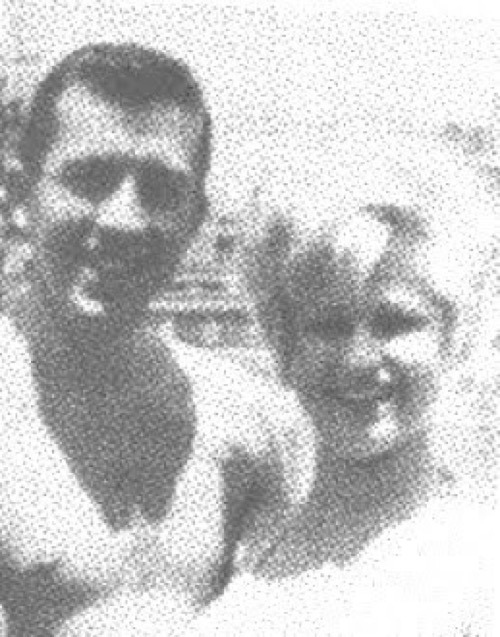
Oliver then told her story for the first time.
She used to be a singer in Dallas, and worked opposite Jack Ruby's Carousel Club. Shortly before the assassination Ruby had introduced her to his friend Lee and told her that he worked for the C.I.A when he wasn't working at The Texas School Book Depository.
On the day of the assassination itself, she claimed she took a Yashica Super-8 Zoom movie camera down to Dealey Plaza and filmed the whole thing and, indeed, that's her in the trench coat and scarf. Shortly after, she then gave the camera to an inquisitive FBI agent (the best kind) because she had a load of marijuana in her bag and didn't want him to search her.
That was the last she ever saw of the camera.
Were there some glaring inconsistencies to Oliver's story? Plenty.
Did she have explanations for them? Of course she did.
Critics pointed out the camera she claimed to have used in 1963 hadn't existed until 1967. But Oliver countered that she’d been given a prototype by a boyfriend who worked at Kodak.
Critics pointed out that The Babushka Lady had dark hair and Oliver was blonde. She countered again, saying that she owned a lot of dark wigs in 1963.
So, that's her story - if you choose to believe it. The Babushka Lady, hitherto unidentified, was actually a 17-year-old blonde girl in a wig, holding a camera that hadn't been invented yet, with a bag full of weed.
Convinced?
Well, Oliver Stone was. He gave her a role as Technical Advisor on JFK.
However, many people weren't and have since sought to expose her through the years. At best, she's painted as a vainglorious charlatan, seeking notoriety and fame off the back of the assassination. At worst, her mental health has been questioned and she's become a poster girl for exactly the sort of fantasist that a subject like this undoubtedly attracts.
In that respect, releasing a religious album with a puppet called Erick probably didn’t help.
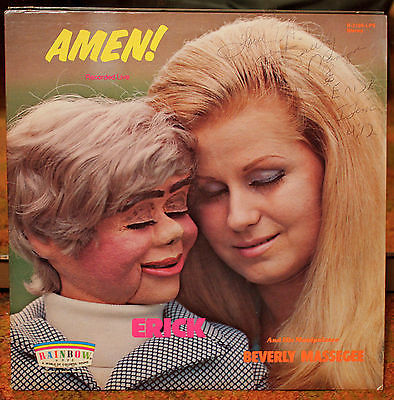
Fast forward to 2013 – 50 years after the assassination.
I've been attending a JFK Assassination Conference in Dallas - 3 days of bullet trajectories and autopsy analysis. It's more fun (probably) than you think but now it's about to get even better - they've laid on a banquet and cabaret to round off the itinerary!
And Beverly Oliver is the singer!
I know, now you're jealous.
She walks out, still looking younger and slimmer than The Babushka Lady, and takes the microphone. After an Amazing Grace, which was anything but, she then launches into a medley of '60s hits.
An old man with a beard gets up from his chair and starts to do the twist.
And then another one follows him.
Oliver, a woman who very much knows how to work a crowd, leaves the stage and joins them on the floor - singing just for them whilst simultaneously encouraging everyone off their feet. For someone like me, who worships the quirkier side of life, you have to understand this was quite a sight and I sat there taking it all in - one Babushka Lady, maybe, and her two geriatric dancers, definitely.
These are the moments I live for.
I was sitting next to a researcher called Pat, who I decided was normal purely on the basis that he was wearing a Pogues' t-shirt. He tapped me on the shoulder, during whatever song it was, and I turned around to face him. He leant in, conspiratorially, and whispered -
"Hey, do you think she is The Babushka Lady? Or just someone trying to get a singing career off the back of her notoriety?"
What I probably should have said was that I don't know and I don't really care. The stories interest me more than the search for truth and I'm sort of glad she's told hers - even if she's made the whole thing up. It adds a richness, a touch of absurdity, and I can't help be fascinated by the idea of someone who's pretended to be someone else for over 40 years.
What sort of person does that?
What does it say about her imagination?
What does it say about my own that, as I'm writing this, the thought has crossed my mind that the real Babushka Lady is still out there - alive and well. That she might be reading this now, sitting in her home in Dallas – wearing an old headscarf and frantically googling “Coronation Street.”
We're all prone to flights of fancy sometimes - just some more than others.
But that wasn't my reply to Pat. It had been a long three days, people were dancing, and I decided he probably wasn’t in the mood for the long answer.
So, I leaned into him, making sure he was my only audience, and whispered -
"You know what, Pat. I think she is The Babushka Lady".
He looked at me, like a father looks at his son after his first attempt to draw a cat.
"Really?", he replied. "What makes you think that?"
"Because if she isn't, she'd be a better singer."
Join us next week where we leave Dealey Plaza for the first time and tell the story of a boy called Lee.
Martin Fitzgerald (@RamJfkClub)
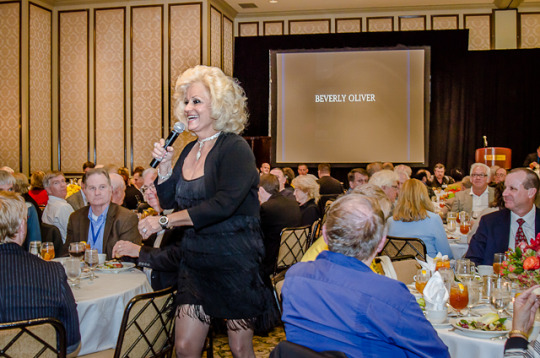
2 notes
·
View notes
Text
Week 2 - Can I get a witness?
It's Friday the 22nd of November, 1963.
The time is 12:30pm.
President Kennedy's motorcade is making the turn from Houston to Elm Street, entering the final stage of its tour through downtown Dallas. The crowd is cheering and waving - a mass intoxication has gripped the inhabitants of Dealey Plaza and, for now, everyone is smiling.
Sitting on a wall, approximately 100 feet in front of the Texas School Book Depository, is one of those people - Howard Brennan, a construction worker who works in a nearby railway yard.
He's wearing an aluminium helmet.
But before we roll the action on, there is one thing, above all else, that Howard Brennan REALLY wants you to know about him.
In his own words -
"My vision is unusually good; I'm one of the select few who, for some reason, are gifted with extraordinary eyesight."
He then goes further -
"My faith leads me to believe that my gift of super eyesight may have caused Providence to place me at that spot in Dealey Plaza."
Brilliant. We couldn't have picked a better person for a witness - he's practically one of the X Men.
In fact, to give you an example of just how great his eyesight was, Brennan later testified that at 12:24, six minutes before the car turned on to Elm, he had noticed a strange figure on the sixth floor of the Texas School Book Depository - a man who appeared to be moving back and forwards from the corner window.
And why did Brennan think the man was strange?
Well, despite being 100 feet away, Brennan said he was the only person in Dealey Plaza that wasn't smiling.
This was his view of that window -

As the President's car turned on to Elm, Brennan suddenly heard a loud explosion that he first thought was a motorcycle back firing. Yet, for reasons best known to him, he immediately glanced up to the sixth floor window - to where he had seen the strange man. Now though, he sees a rifle and the man taking aim as he follows the car down Elm Street.
Brennan hears another shot and, with his eyes still fixed on the window, sees the man pull the rifle down to his side and calmly stand there, observing the scene and reassuring himself that he'd hit his target. Satisfied that he had, the man pulls back from the window and disappears.
Suddenly there's chaos, the scene has changed dramatically and everyone has sobered up. Some people are running towards the grassy knoll, a family is shielding their children in fear of more shots. All around, the inhabitants of Dealey Plaza are trying to make sense of what's just happened - deciding on their next move.
One man, with an umbrella, heads back to work and keeps his head down for 15 years.
Another man, Lee Harvey Oswald, apparently walks straight out of the front door of The Texas School Depository, within a few feet of Brennan, and leaves the scene.
Brennan now decides to get involved. He finds the nearest policeman and tells him what he saw - a white man, slender, between 5ft 8 and 5ft 10, in his early 30s, wearing light coloured clothing.
This is the description that gets communicated to the Dallas Police Department and, within 90 minutes, Lee Harvey Oswald is arrested in a cinema a few miles away.
Without Brennan, it wouldn't have happened. Oswald might have got to watch the end of the film and who knows what he would have done next. But Brennan had intervened, he'd been in the right place at the right time.
And best of all, he pulled the whole thing off whilst looking like a member of Devo.
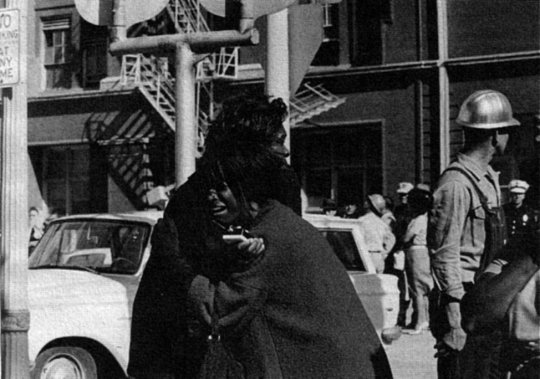
With Oswald now in custody, Brennan is summoned to the Police Station to identify him from a line up of seven men. In order to give him the best chance possible, a policeman helpfully points at Oswald and asks -
"Does the second man from the left look like the man you saw?"
Brennan freezes for a moment and replies -
"He looks like the man but I can't say for sure."
Oh.
He's then asked if he would like to make a positive identification of Oswald and he refuses to do so. And on that day it was left there, with Brennan undecided.
What happened? Had his legendary eyesight failed him? Was he now having doubts?
Fast forward a few months to his testimony before the Warren Commission and it's a slightly different story. Now he can make a positive identification of Oswald. He's 100% certain - he was the man he saw shoot the President.
When asked why he refused to do this on the day of the assassination Brennan explains -
Mr BRENNAN - "I believe at that time, and I still believe, that it was a Communist activity, and if it got to be a known fact that I was an eyewitness, my family or I, either one, might not be safe."
Maybe there's a part in all of us that would be reluctant to be THE witness in such a high profile crime. It's therefore entirely plausible that our first thoughts would be for the the safety of the ones we loved.
But then you hear his reason for changing his mind -
Mr BRENNAN - "After Oswald was killed, I was relieved ....there was no longer that immediate danger."
Of course. What tends to to calm people down, and reassure them that everything is safe, is someone getting murdered in police custody - live on national television.
Still, Brennan doubled down on his testimony and The Warren Commission cited him as their "Star Witness". He achieves notoriety, respect, and what follows is a giddy few months of doing magazine interviews and posing for photographs. To this day, he's the only person who claims to have seen Lee Harvey Oswald shooting the President.
Here he is recreating his position on the wall that day looking up at the sixth floor window - marked A.
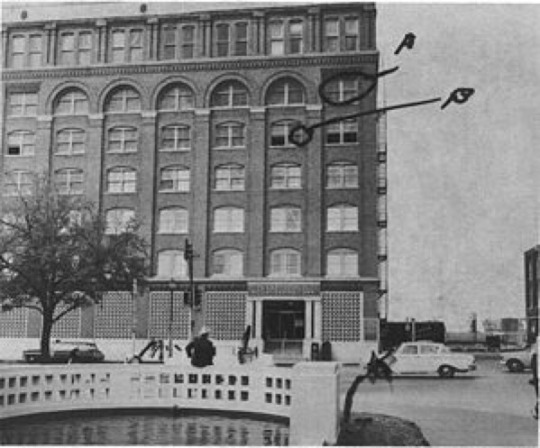
His story should have ended there and Brennan, more than anyone, now wishes it did. But people who were searching for different conclusions to The Warren Commission started to scrutinise his testimony and, one by one, they pick him apart.
He said the assassin was standing whilst he fired the shots, but the fact the window was half open tells us that's impossible.
He said Oswald was wearing light coloured clothing but he was wearing a dark shirt.
He said he only heard 2 shots but the official version requires 3.
He said the man was in his early 30s but Oswald was only 24.
But perhaps most damning of all, they kept coming back to his testimony on the day of the assassination and his refusal to identify Oswald in the line-up. In Mark Lane's book, Rush To Judgement, one of the first to openly criticise the official verdict, there is no other witness that appears in the index more than Brennan. And on 30 different pages, Lane absolutely slaughters him.
The criticism took its toll and the "Star Witness" was, at best, accused of being mistaken and, at worst, of being a liar and a self promoting bystander. His health suffered as a result and his life became a series of episodes that saw him move around the country, trying to escape his past. By the time we get to the second official investigation, The 1978 House Select Committee on Assassinations, Brennan doesn't even appear as a witness and the committee considers his previous testimony as inconclusive. With that, his account is airbrushed from the record and the doubts about what he saw that day have lingered ever since.
Brennan, in one respect, is the everyman at the heart of the JFK Assassination. He lived in the wonderfully named Urbandale and his wife's parting words that day were "Don't be late home tonight dear, remember we're going furniture shopping". And prior to attending the line-up that evening he actually did go furniture shopping! After everything that happened. But after that night he was never the same and the image he creates is of a 50s man stuck in a 60s nightmare - an innocent man who would do anything to go back to his life at the start of the film.
But also, he represents the pitfalls of eyewitness testimony. Because when you double down like he did, you run the risk of falsifying your own memory - creating a knowledge that you stick to, rather than objective evidence. His story isn’t about whether Oswald was guilty or not. That misses the point and, in fact, I would argue it’s entirely possible to believe Oswald was the lone assassin and that Brennan, consciously or subconsciously, reconstructed his memory of the events of that day.
As the years went on, though, he may have secretly regretted the certainty of his position. His best move, despite the pressure to please, and the blinding limelight, may have been to simply say "I'm not really sure mate." And if he had his time again, maybe that's the part he would have played - a quiet cameo instead of a starring role.
But there was no sequel for Brennan, nor second chance. Something happened to the star witness that would ensure he was never put in this position again.
In January 1964, two months after the assassination, he suffered an accident at work that left him blind for six hours. When he finally did recover, his eyesight was never the same again - his clarity of vision forever diminished.
It's a cruel irony, maybe one that anyone else would put down to coincidence - just another one of those strange things to happen to the people in Dealey Plaza. But for Brennan? Such a strong believer in Providence? You can’t help but wonder what went through his mind for those six hours when he thought he would never see again.
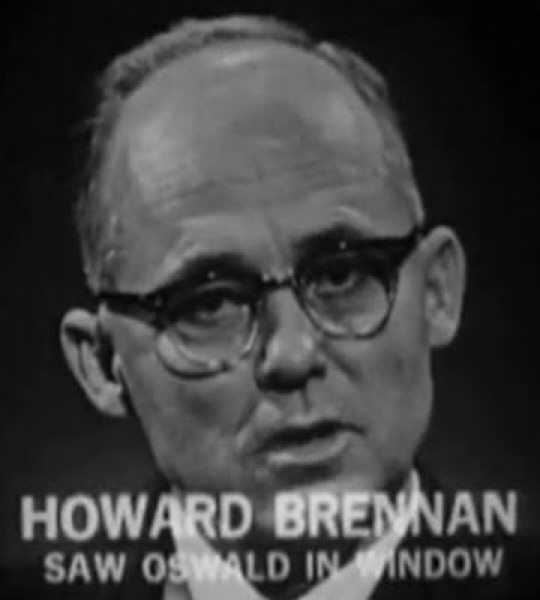
2 notes
·
View notes
Text
Week 1 - The Umbrella Man
It's Friday the 22nd of November, 1963.
The time is 12:30pm
President Kennedy's motorcade has just turned into Elm Street, where it's greeted by a small crowd. A young girl runs alongside the car, trying to keep up. A middle age man stands on a white plinth, cradling a movie camera in his hand.
People are waving, cheering, shouting their tributes to the president and his wife in the hope they'll be heard. They'll never be this close again, they want to make an impression and be part of the action.
When you freeze the frame and study everything, it's remarkable what you notice - the behaviours and actions of all these people crystallised in a single moment.
For example, by the side of the road, only a few feet away from the President himself, stands a man holding a large black umbrella above his head. At first glance, you'd be forgiven for ignoring it. It's just a man and an umbrella after all - as benign an image as you could possibly imagine.
But then you're told that it wasn't raining.
In fact, it hadn't rained for three hours.
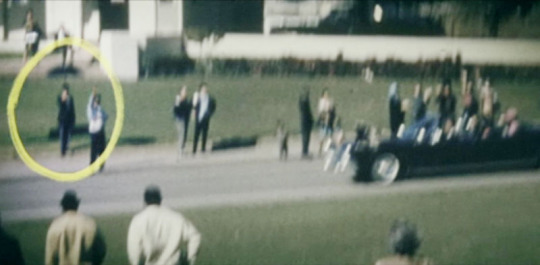
In the official investigation of what happened next, there was no mention of the "Umbrella Man". Neither the police, the FBI, nor the Commission assembled to investigate the crime, ever located or questioned this man - it's not even clear whether they attempted to.
However, in the unofficial investigation, carried out by hordes of amateur detectives and curious minds, he started to become a person of interest. And the inevitable happened - people started to attach motive to the blurred image they'd seen in photographs.
One theory suggested that Umbrella Man was providing a signal for multiple assassins to start shooting.
Another theory suggested that his umbrella fired a poisoned dart that would immobilise Kennedy just before the shooters took aim.
It's easy to suggest these theories are far fetched because, well, frankly they are. Imagine trying to recruit someone to stand next to the President of The United States whilst lots of people shoot from different directions.
"So I just stand there? With an umbrella?"
"Yeah, pretty much."
"That won't look weird?"
"Probably not"
“Ok, i’ll meet you in Dallas.”
And the dart theory?
Well I've never really understood why you would need to immobilise someone that's about to be shot in the head. That generally does the trick by itself and, if I'm being honest, I'd fancy my chances with a rifle over a big umbrella with a load of darts attached to it.
Yet, despite the obvious flaws, it kept coming back to one thing - it wasn't raining. The inescapable nonsense of the image kept it alive and people continued to look for answers. In 1967, even John Updike got caught up in the mystery and, writing in The New Yorker, started to speculate as to the meaning of The Umbrella Man.
Still, not even Updike could settle on an explanation that made any sense and the mystery endured.
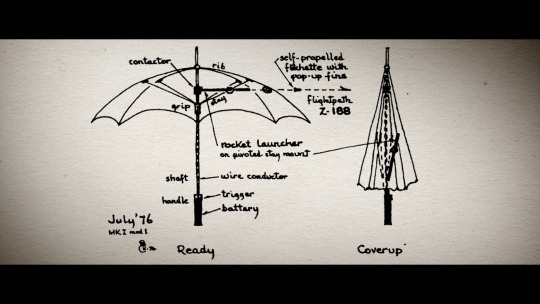
It's now 1978 and there's another official investigation into the events of that day - The House Select Committee on Assassinations. Its purpose is simple, to satisfy the curiosities that have emerged since 1963 and fill in the gaps from the original investigation. It will examine the role of the Mafia, Russian Intelligence, Cuban Exiles, the CIA, and the FBI. It will also, for the first time, try and establish why there was a fella holding an umbrella when it wasn't raining.
To that end, the newspapers in Dallas are filled with photographs of The Umbrella Man with a clear message for either him, or anyone who knows his identity, to come forward.
And in his home in Dallas, The Umbrella Man picks up the paper and gets the shock of his life.
All these years, he had no idea that he had become a person of interest, that people had speculated about his actions 15 years ago. Despite being a witness, he'd never read a book about the assassination and shown no interest in it whatsoever. On the day itself, he just went back to work, put his umbrella back in the rack, and got on with his life.
But now his past, or at least a frame of it, had caught up with him in dramatic fashion.
He decides to ignore it and, again, get on with his life. If it was up to him, the story would have ended there, his identity a secret and his motive unexplained. But it wasn't up to him. One of his best mates, who had seen the photos, grassed him up and gave this story the ending it deserves.
Before long, the Dallas Press descended on the home of one Louie Steven Witt and they all asked him the same question
"Is it true? Are you The Umbrella Man?"
He had no choice, he had to testify before the committee.
At last! After 15 years of other people's theories, of conjecture and speculation, we were now going to hear from the man himself. The mystery was about to be solved and, finally, those that wanted an explanation would get one. Louie Steven Witt presented himself before the commission in the mood to give answers and guess what? He pulled an absolute master stroke when he arrived.
He brought the fucking umbrella with him.
He'd kept it for 15 years and, in only his second appearance as The Umbrella Man, he made sure it was by his side.
What a showman.

After a few pleasantries, the commission get down to business and ask him THE question -
Mr GENZMAN - Why were you carrying an umbrella that day?
Mr WITT - Actually, I was going to use this umbrella to heckle the President's motorcade.
I know, I'm guessing you hadn't expected that.
Witt explains that during a coffee break at work he heard someone say that umbrellas were a sore point for the Kennedys and that's how he came up with the idea. He repeats his reason again -
Mr WITT - I was just going to kind of do a little heckling
He then goes on to explain, really badly, the meaning of this heckle -
Mr WITT - It had something to do with something that happened years ago with the senior Joe Kennedy when he was Ambassador to England.
What he's trying to get at here, is that Kennedy's father, along with Neville Chamberlain, were largely criticised for the appeasement policy towards Nazi Germany and that the umbrella, an ever present prop for the British Prime Minister, had become a symbol of that appeasement.
As niche heckles go, you have to say it's up there and it might have been better to dress up as Marilyn Monroe instead. Still, this was Witt's story and he stuck to it. He was making a political point that not many people would have understood in 1963, that practically no one understood in 1978, and, trust me, is quite difficult to explain in 2016.
He also explains how he ended up in Dealey Plaza that day, telling the committee that he specifically chose that location because he DIDN'T want to draw attention to himself. When he left his office that morning he walked the motorcade route along Main Street and Houston and, with each step, he thought -
"Not here. Not here. Not here."
There were too many people, too large an audience for his heckle. So after walking for 10 minutes he arrives in Dealey Plaza, with the Texas School Book Depository on his left and the grassy knoll on his right. Looking around he thinks -
"This will do, there's hardly anyone here. I'll just do my umbrella heckle, that I don't really understand, and then go back to work. Yeah, this is perfect. Dealey Plaza, no one's gonna pay attention to anything I do here."
Having dealt with the events of the day, his testimony then veers off into the surreal and the mundane. At one point, he tells everyone about his umbrella collection -
Mr WITT - There are some in the back closet. I usually have one in the car. The other day I stumbled over one in the garage.
Mr FORD - So you buy a lot of umbrellas; is that correct?
Mr WITT - No, not particularly. I am 53 years old. You collect a lot of stuff in that period of time.
He then adds, in what surely would have been his twitter bio -
Mr WITT - Umbrellas are not a particular hobby of mine.
Finally, he concludes his testimony with his last public words on the subject -
Mr WITT - The only other thing I would care to say is that I think if the Guinness Book of World Records had a category for people who were at the wrong place at the wrong time, doing the wrong thing, I would be No. 1 in that position, without even a close runner up.
So there you have it, the story of Umbrella Man.
Some people thought his testimony was so preposterous that it was simply unbelievable. The film director Alex Cox (Repo Man, Sid and Nancy, Straight To Hell) posted a home movie recently where he insisted that umbrellas with darts is an actual thing and that Witt was a liar.
For him, the story has no conclusion and probably never will.
For most people, though, it was over. They thought his explanation was so preposterous that it had to be true and if there was meaning to be derived from The Umbrella Man it was in our actions, not his - that he should serve as a cautionary tale of what happens when you zoom in just that bit too much.
And maybe they're right.
Maybe his only crime, if you can call it that, was doing something a bit weird during one of the most studied 6 seconds in history.
As we’ll come to see, he wasn’t the only one.
Martin Fitzgerald (@RamJfkClub)
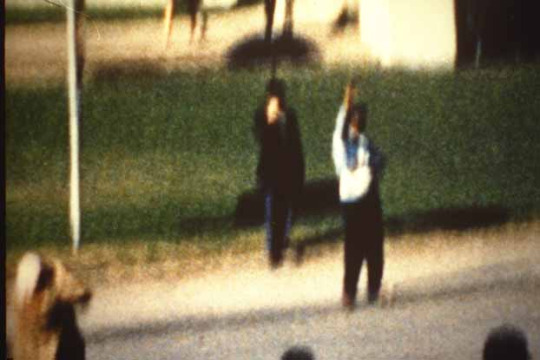
6 notes
·
View notes